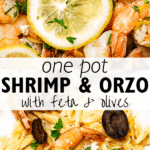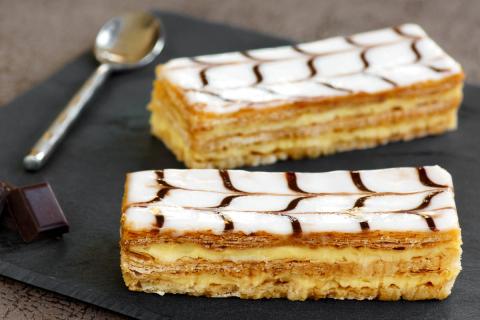Once upon a time – in 2018 to be precise – fans had to reserve months ahead to dine at Maum, a 16-seat, Michelin-starred restaurant in Palo Alto. What started as a private dining club by married chef couple Michael and Meichih Kim became a tasting menu-only hot ticket, offering modern Korean fare at $165 a head. These days, the couple can be found at a far different setting – the new State Street Market food hall in neighbouring Los Altos, where their latest venture, Bǎo Bèi, is all about affordable bao buns and dan dan noodles.
Their move is emblematic of a larger trend – all over the U.S, more and more Michelin-starred and fine-dining chefs are discovering food halls and calling them home. At State Street Market, the Kims are sharing the spotlight with chef Srijith Gopinathan, part of the team behind Palo Alto’s two-Michelin-starred Indian restaurant Ettan, who previously worked at the two-Michelin-starred Compton Place in San Francisco. This year, Gopinathan, a James Beard nominee, partnered with Ayesha Thapar as co-owners on the new Cal-Indian comfort food concept called Little Blue Door.
Michael and Meichih Kim of Bǎo Bèi, photo by Patricia Chang
In Miami, Time Out Market, part of an international chain of food halls, recently launched two spots by starry chefs: Crew-do by Top Chef winner Jeremy Ford, who just won a Michelin star for his restaurant Stubborn Seed, and Little Liberty by James Beard winner Michelle Bernstein. New York’s food hall The Hugh, open since 2021, includes PDA Slice Shop, an outpost for an eponymous Park Slope pizza shop by chef Robert Guimond, previously of Jean Georges and Michelin-acknowledged Roberta’s.
Instead of buttoned-up, sit-down meals, food halls offer easily digestible, relatively fast fare. And yet, they bring a new sensitivity to the scene, be it by sourcing only the best ingredients or utilising elevated techniques. “The most important things that you learn in fine dining isn’t how to work with foie gras or how to clean a lobster, it’s how to move in a kitchen and how to approach ingredients,” says Guimond, whose spot at The Hugh serves NY and Detroit-style pizza slices with toppings like spicy meatballs, or hot sope with arugula and pesto, as well as arancini, and shishito peppers with lemon and tarragon. “I’m not going to put a tournedos Rossini pizza on my menu. But I can approach well-sourced flour with the same reverence and excitement in which I approach a well sourced beef tenderloin.”
At Little Blue Door, says Gopinathan, the food did take some of the identity of Ettan: “We derived a lot of basic ideas.” This means stylish, light and comforting dishes defined as Cal-Indian, such as rotisserie cauliflower with cashew, pickled mustard and coconut rice, and warm masala egg puffs with homemade chutney. “My fine-dining background does help in careful pre-preparation of food, to make sure the finished food is cleaner and finer,” says Gopinathan. “An example of this would be brining a cauliflower before marinating and roasting, when I could get away with seasoning right before roasting.” The chef also offers an insight into the conceptualisation of a food hall offshoot: head and heart, the emotional and the financial. “One needs to be emotionally attached to translate good food to great food, and also one needs to apply their financial acumen to make sure emotions don’t hijack the business.”
Food halls are hardly new, and neither is the unlikely union of fine-dining and casual formats. In 2020, Dialogue, an 18-seat, Michelin-star restaurant led by chef Dave Beran, made headlines thanks to its location in a Santa Monica mall food court. Mario Batali discovered the appeal of open-floor concepts with Eataly years earlier – a splashy location featuring a marketplace and a variety of counters serving Italian classics just opened in Silicon Valley.
Little Blue Door Rotisserie Cauliflower, photo by Angelina Hong
And yet, the momentum is stronger than ever both for the curators of food halls and chefs who previously had their hands full operating high-end, acclaimed institutions. As airy, no-reservations-needed food markets have grown in popularity in the pandemic aftermath, and the market grew competitive, the goal has been to attract top-talents with cult followings. In Chicago, chef Bryan Enyart, who once led the Michelin-starred Topolobampo (which belongs to a group of restaurants owned by culinary superstar Rick Bayless) was relatively early to the game; in 2021, he opened Dos Taqueria inside Revival Hall Food Market in the city, serving tacos and bowls. “The overhead for a restaurant is insane, and to open a place in a food hall is much easier, the financial commitment is much lower,” he explains the timely appeal, given the enormous shake-up Covid-19 delivered to the restaurant industry.
Also, he adds, as staffing became increasingly difficult post-pandemic, food halls make for a good case: “There’s no normal service and very little front-of-the-house staff, so when a guest comes in for lunch and tips it gets dispersed between all the hourly salaried people, and they walk away with much more.” Enyart loves the concept so much, he’s planning on opening another business inside Revival soon – a vegan juice and smoothie stall. “With food halls, it’s an annual contract, so there’s none of that gigantic investment in the beginning, and it’s a good place to test ideas you want to take off the ground.”
Little Blue Door Fava Vada Slider, photo by Angelina Hong
More on the practical side of things, Gopinathan says: “The fact is that chefs are becoming a bit more business savvy and finding good, business-savvy partners to fund them and with whom they work. I feel fortunate in that way.” Additionally, as diners are resuming convivial meals and companies are returning to the office, feeding families, close-knit groups and workers starved for socialising feels exciting again.
“We wanted an approachable concept in terms of price point and appeal to families and groups of friends,” says Meihcnih Kim of Bǎo Bèi. Besides, if everyone’s questioning their careers these days, why not Michelin-star chefs? “It’s no secret that fine dining requires a lot of labour and time. Why not translate the same mindfulness into a fast-casual concept that everyone can enjoy in a more casual setting?” says Kim. ”The pandemic accelerated the exploration process for fine-dining chefs to look beyond just fine dining,” adds Gopinathan.
From expertly made baos stuffed with shrimp mousse, to delicate pani puri eaten al-fresco, casual food hall diners are the real fortunate ones.







